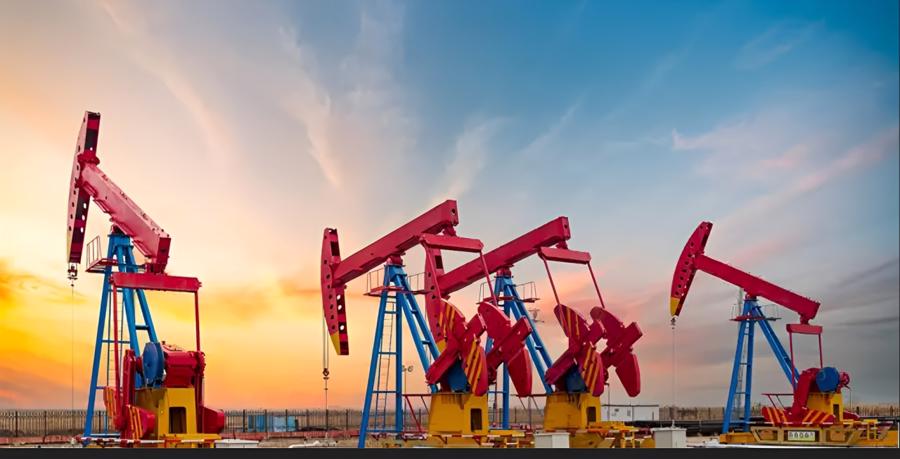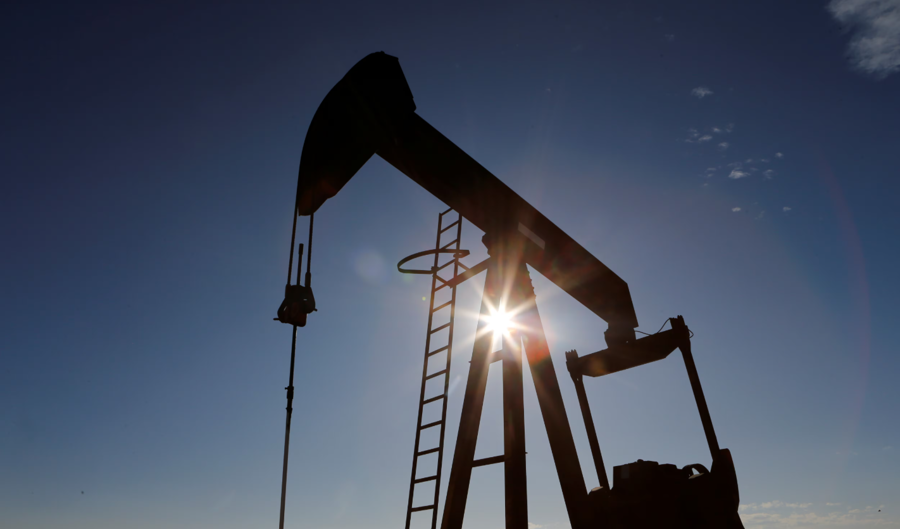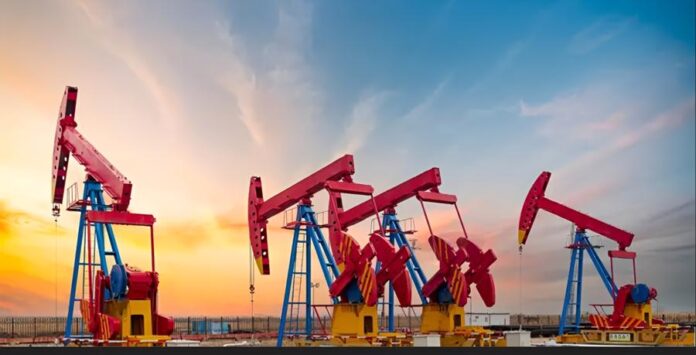According to the International Energy Organization (IEA), the combustion of fossil fuels accounts for over 75% of global GHG emissions, with the oil and gas industry directly responsible for nearly 15% of energy-related emissions.
Businesses that fail to adapt in time to this transition will face “asset stranding,” leading to reduced investment value and market competitiveness. On the other hand, those that pivot towards clean energy solutions will have opportunities in the rapidly growing markets for renewable energy, power electrification, and carbon management.
THE THREE MAJOR CARBON EMISSION SOURCES
A comprehensive Stanford University study (2018), based on data from nearly 9,000 oil fields in 90 countries – accounting for 98% of global production, painted a concerning picture of the oil and gas industry’s greenhouse gas emissions. On average, each megajoule (MJ) of energy from crude oil produces approximately 10.3 grams of CO₂ equivalent (CO₂eq). However, there are significant variations between countries, ranging from a low of 3.3 grams in Denmark to a record high of 20.3 grams in Algeria, a sixfold difference.
The study identified three main factors that determine carbon emission levels in oil and gas extraction.
Firstly, gas flaring, the practice of burning natural gas that is released alongside crude oil during extraction, is one of the most serious emission sources. Instead of capturing and reusing this gas for power generation or industrial purposes, it is burned at the oil wellheads, often due to a lack of infrastructure or economic considerations.

This practice not only wastes resources but also generates large amounts of greenhouse gases, including CO₂ and other pollutants. It is a significant emission source in many countries, notably Algeria (accounting for 41% of the industry’s total emissions), Iraq (40%), Nigeria (36%), and Iran (21%). Notably, in the US, the volume of flared gas increased from 36 to 122 scf/bbl during 2010–2015.
Secondly, the challenge arises from extracting heavy oil and oil sands, which have higher viscosity and contain more impurities, making the extraction and processing much more energy-intensive than conventional light oil. To separate the oil from the sand or pump it from the ground, techniques such as steam injection, in-situ burning, or chemical solvent usage are employed, requiring substantial fuel input.
In Canada and Venezuela, this process emits greenhouse gases two to three times more than conventional oil extraction, making this type of extraction one of the highest carbon emission sources in the oil and gas industry. In California, USA, the application of steam injection increased by 30% during 2012–2015, leading to a significant rise in emissions.
Thirdly, methane leakage is a significant issue. Methane is a greenhouse gas with a much higher heat-trapping potential than CO₂. In this context, methane is not burned but escapes directly into the environment during oil and gas extraction, transportation, or storage. This is a critical concern because methane traps heat 25-30 times more effectively than CO₂ over a 100-year period and over 80 times more in the first 20 years.
According to the Global Methane Tracker report, the oil and gas industry leaked approximately 135 million tons of methane in 2022, equivalent to over 3 billion tons of CO₂eq. However, not all oil and gas-producing countries share equally high emission levels. Norway and Saudi Arabia are exemplary in controlling emissions through advanced technology and efficient management practices. Norway has reduced gas flaring to below 1% through gas capture and reuse systems and operates its offshore rigs with clean energy from hydropower…
These findings highlight significant disparities among oil-producing countries in environmental performance and also present opportunities to reduce greenhouse gas emissions by prioritizing the development of low-carbon intensity oil fields and increasing investment in technology to improve efficiency at high-emitting fields. If properly leveraged, these disparities can serve as a lever for the oil and gas industry to contribute significantly to global efforts to combat climate change.
RISKS IN THE TRANSITION PROCESS
In reality, the transition to a low-carbon economy presents both opportunities and challenges for the oil and gas industry. According to the International Energy Organization (IEA), the transformation of the global energy system has already begun, driven by technological advancements, shifting consumer habits, and stringent climate policies. However, to achieve the goal of net-zero emissions by mid-century, this process needs to be accelerated.
One of the most significant risks is “physical risks” associated with the direct impacts of climate change, such as an increasing frequency of extreme weather events, which can damage the infrastructure of the oil and gas industry. Additionally, there are “transition risks” related to market changes, new climate policies, and legal actions that may affect the profitability of traditional oil and gas exploration and processing activities.
These risks can have severe financial implications. Businesses that fail to adapt in time to this transition will encounter “asset stranding,” leading to reduced investment value and market competitiveness. Conversely, those that pivot towards clean energy solutions will have opportunities for growth in the rapidly expanding markets for renewable energy, power electrification, and carbon management.
Initial investments are crucial to avoid “infrastructure lock-in” and ensure a smooth transition. Delaying action will increase long-term costs, disrupt supply, and result in stranded assets. IEA emphasizes: “every dollar not spent on clean energy today will add $4.5 to the cost of the energy transition.”
Reducing methane emissions is one of the most cost-effective and impactful opportunities for the oil and gas industry to reduce its greenhouse gas emissions.
According to the IEA, approximately 75% of methane emissions from oil and gas operations can be mitigated by applying existing technologies. These technologies include leak detection and repair programs (LDAR), improving compressor efficiency, and replacing pneumatic controllers with non-emitting alternatives.
These measures are not only technically feasible but also economically beneficial, especially in regions with flaring regulations or carbon pricing systems.
While there are opportunities to reduce methane emissions, implementing these measures lacks synchronization and effectiveness. According to IEA analysis, only about 10% of methane emissions from the oil and gas industry are currently controlled through mandatory regulations. Therefore, strengthening international cooperation, establishing transparent reporting standards, and promoting methane reduction initiatives such as the Oil and Gas Methane Partnership (OGMP 2.0) are key to accelerating progress in this area.
Despite growing climate commitments, capital expenditure by oil and gas companies remains heavily biased towards traditional fossil fuel projects. According to the IEA, only 2.5% of upstream oil and gas capital expenditure was directed towards emission-reducing options in 2022. This level of investment needs to increase to over 50% by 2030 in the net-zero emission scenario.
Businesses must pursue long-term investment strategies, balancing short-term profits with future adaptability. This entails employing advanced climate governance tools such as internal carbon pricing, scenario planning based on climate change projections, and disclosing risks aligned with the recommendations of the Task Force on Climate-related Financial Disclosures (TCFD).
Financial institutions also play a pivotal role in this transition. By redirecting their lending and guarantee activities towards net-zero emission targets, they can not only channel capital towards sustainable energy solutions but also exert pressure on non-compliant businesses to improve their environmental performance.
SEVEN SOLUTIONS TO REDUCE CARBON EMISSIONS IN THE OIL AND GAS INDUSTRY
Experts argue that the consequences of failing to align the oil and gas industry with NetZero pathways are severe. Continuing to invest in high-emitting projects could lead to exceeding climate targets, increasing physical risks, and causing social and economic instability.
According to the Intergovernmental Panel on Climate Change (IPCC), surpassing the 1.5°C temperature rise threshold could lead to irreversible climate impacts, including rising sea levels, loss of biodiversity, and extreme weather events. These developments would disproportionately affect vulnerable communities and undermine global development goals.
Moreover, legal and regulatory risks are escalating. Governments are increasingly implementing carbon pricing, emission standards, and plans to phase out fossil fuels. Investors are demanding climate-aligned strategies, and lawsuits against high-emitting companies are on the rise.

In this context, proactive leadership from the oil and gas industry is not only a moral obligation but also a strategic imperative. Companies that embrace this transition can develop new revenue streams, enhance stakeholder trust, and position themselves as partners in climate action.
According to experts, reducing greenhouse gas emissions from the oil and gas industry requires implementing a range of strategic solutions grounded in science and technology.
Firstly, it is essential to establish and expand fuel standards based on life cycle assessments (LCA) to comprehensively evaluate emissions from extraction to fuel usage. Policies such as California’s (US) clean fuel standard, British Columbia’s (Canada), and the European Union’s (EU) have proven effective in creating market incentives for technological improvements without mandating specific fuels. Expanding these policies at the national and international levels can provide clear incentives for low-carbon intensity oil producers, i.e., those emitting less CO₂ per unit of energy.
Secondly, enhancing transparency in emission reporting and data disclosure is crucial. The lack of transparency in technical data is a significant barrier to tracking and reducing emissions. Countries like Norway, Canada, the UK, and Denmark have taken the lead in mandating disclosure requirements for oil and gas extraction facilities. This is particularly important in the context of the Paris Agreement, which calls for transparent and accountable annual emission reporting.
Thirdly, prioritizing the development of low-carbon intensity resources is essential. The variation in carbon intensity among oil fields can lead to significant differences in total emissions. Choosing low-emitting oil sources, such as shale oil instead of oil sands, is crucial to reducing global cumulative emissions.
Fourthly, promoting low-emission technologies for oil and gas extraction and processing is vital. Initiatives such as using solar energy to generate steam for heavy oil fields in Oman and California have shown potential for significantly reducing CO₂ emissions. Additionally, clean hydrogen from wind or biomass, nano-particle technology, or carbon capture, utilization, and storage (CCUS) solutions can be employed to reduce emissions at the source.
Fifthly, strict control of gas flaring and methane leakage, which are significant but avoidable emission sources, is necessary. For example, Canada mandates reduced production if flaring is not controlled. Countries should link oil extraction to infrastructure investments that capture and utilize associated gases to prevent waste and reduce emissions.
Sixthly, methane emissions require more effective monitoring and recovery through modern sensing technologies such as satellites. According to the IEA, 40-50% of methane emissions from the oil and gas industry can be eliminated without incurring net costs and may even generate profits.
Seventhly, international cooperation is essential in this transition. Forums such as the G20, Clean Energy Ministerial, and COP can facilitate technology sharing, emission standard harmonization, and support for developing countries through climate finance and technology transfer. Only by working together can countries achieve a fair and effective transition towards net-zero emissions…
The Soaring Costs of Vietnam’s Aviation Industry
Between 2025 and 2030, the adoption of sustainable aviation fuel (SAF) is projected to increase fuel costs for Vietnam’s aviation industry by an estimated $25 million, averaging $4.5-$5.5 million annually.
The Cost of Congestion: Unraveling the Billion-Dollar Traffic Woes in Hanoi and Ho Chi Minh City, with a Revolutionary ‘Traffic Circle’ Solution
“With his keen eye for optimization, Delegate Nguyen Van Canh proposes a revolutionary idea to alleviate traffic congestion at major roundabouts in urban areas across Vietnam. His suggestion, inspired by the successful implementation at the Phu Dong roundabout in District 1, Ho Chi Minh City, offers a glimmer of hope for smoother traffic flow in the country’s bustling metropolises.”
The King of Fruits Faces an Uncertain Future: Unripe Durian Trees in Gia Lai Province Suffer a Devastating Blow.
In the face of extreme weather conditions, farmers in Gia Lai province witnessed a devastating sight as their young durians, no bigger than a fist, started falling off the trees en masse. This unexpected turn of events has left farmers in this mountainous region grappling with the stark reality of potential crop failure and significant financial losses.
“The Banking Sector’s Early Embrace of Green Credit: Scaling Up and Accelerating Sustainable Lending”
On May 21, 2025, the State Bank of Vietnam (SBV) hosted a seminar to promote the implementation of the banking sector’s Action Plan for the National Green Growth Strategy for the period of 2021-2030. The event also witnessed the launch of the “Handbook of Environmental and Social Risk Management System in Credit Activities”. Mr. Dao Minh Tu, SBV’s Permanent Vice Governor, attended and chaired the seminar.





















